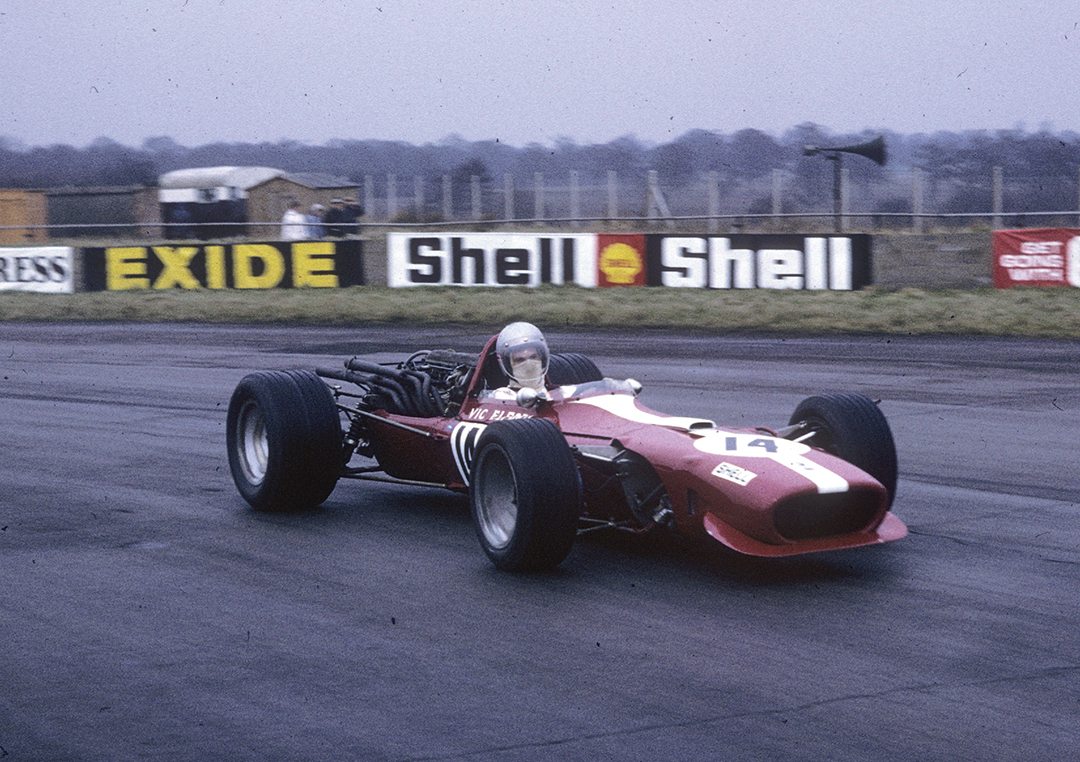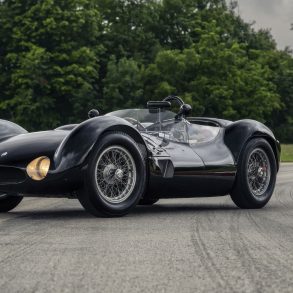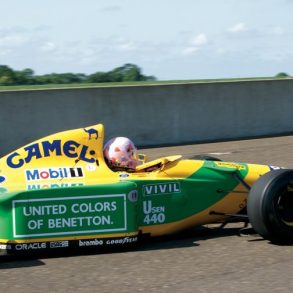While not the greatest racecar of all time, the Cooper 86B-Maserati was that for me, as it gave me a good start in Grand Prix motor racing. Initially, I thought I’d make a great single-seater driver in the various club events that existed. I was studying Autosport magazine one day and saw a block advert from Coopers offering a Type 86B for sale. It was an 18-month-old car, it had three spare engines and God knows how many spare parts—£3,000. I couldn’t resist. It was delivered on the morning of a late summer’s day, very early, just about daylight—around 6:30 a.m. I was very excited and couldn’t wait for it to arrive.
Unloading the car, everything piled up with all the engines, spares and tires. I couldn’t wait to get in the car, but it was two hours later before I was assisted by my mechanic, Peter Bracewell, to get out. I was stuck, from about two seconds after I got in it. I realized from that point on I was never ever going to drive a modern single-seater. So, I knew I’d have to get one of my racing friends to drive it.
The team prepared the car in the usual maroon livery of my Antique Automobiles business. I had entered it for the 1969 International Trophy race at Silverstone, at the end of March. Vic Elford drove the car. He had a great reputation for driving Grand Prix cars, sports cars and rally cars too. He’d competed in the Monte Carlo Rally at the beginning of 1969. He qualified 13th and finished 12th. Not a bad run for a first time out. We were up against modern machinery with DFV engines, apart from BRM who had their own engine. Ours was the very complicated V12 Maserati engine.
The next event, just a couple of weeks later in April, was the Madrid Grand Prix at Jarama. It was another non-championship race. Previously, Jarama had been the home of the Spanish GP, but the 1969 Grand Prix was moved to Barcelona. Jarama tried to drum up interest in a race for F1 and F5000 cars. It offered good start money and good prize money too. My old friend Neil Corner drove the car and finished a very creditable 5th, he’d struggled with the gearbox in the latter stages of the race. We were paid in Spanish Pesetas, a sack full of Pesetas, worth around £1,500—so the car was half paid for. It was great fun and I wondered what to do next.
I received a letter from the organizers of the Monaco GP, the ACM, asking if I’d like to enter the 1969 Grand Prix in May. The requirement was to have an F1-accredited driver with an appropriate license to drive for me in the race. Again, I knew Vic Elford would be the ideal candidate for the race. He agreed. We did some testing at Silverstone prior to the race to get the car working as well as we could. It was quick, but not quick enough to compete on a par with the latest DFV power. We had a wonderful engine man, Pat Norris, who had come from ERA. He had previously worked at Norton on two-stroke engines, a marvellous man who did his best to fettle the Maserati engine, in a effort to reduce the performance deficit. The DFVs were getting around 410 hp, whereas we were only at 380 hp. The beginning of the race weekend was thrown into turmoil as the high wings were banned from this race onward. These changes didn’t affect us. Despite being seriously underpowered, and qualifying in last place, 16th on the grid, we came 7th in the race. It was a great start, so I just had to go on.
— As told to Mike Jiggle










